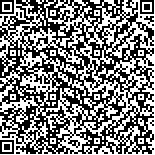| Quote
: |
卓越,许明,邓石峰,刘琼,彭嘉颖,唐丽亚,艾坤,张泓.大鼠骶上不同节段脊髓损伤后神经源性膀胱模型比较及尿流动力学分析[J].湖南中医药大学学报英文版,2022,42(9):1426-1433.[Click to copy
] |
|
| |
|
|
| This paper
:Browser 2653times Download 867times |
| 大鼠骶上不同节段脊髓损伤后神经源性膀胱模型比较及尿流动力学分析 |
| 卓越,许明,邓石峰,刘琼,彭嘉颖,唐丽亚,艾坤,张泓 |
| (湖南中医药大学针灸推拿与康复学院, 湖南 长沙 410208) |
| 摘要: |
| 目的 基于尿流动力学等手段比较第8胸椎下和第10胸椎下两种常见骶上脊髓损伤后神经源性膀胱大鼠模型差异,并优化改良模型制备及术后管理方案,为实验研究中该病动物模型的选择提供依据。方法 从48只成年雌性SD大鼠中随机抽取12只为假手术组,剩余36只再随机均分为模型1组(第8胸椎下脊髓横断)和模型2组(第10胸椎下脊髓横断),然后进行优化改良式的模型制备及术后管理,每组18只。从术后第1~18天,记录各组大鼠一般情况及每日手法排尿量,并于术后第19天行尿流动力学检测。结果 (1)两模型组均有部分不良事件发生,处理后结果尚佳,模型1组存活率为83.3%、成模率为72.2%,模型2组存活率为88.9%、成模率为77.8%;(2)两模型组每日手法排尿量具有术后第4~5天最高,术后第7~8天明显下降,并于术后第16~18天趋于稳定的特点;(3)尿流动力学示:与假手术组比,模型1组和模型2组漏尿点压力和膀胱最大压力均升高(P<0.01),模型1组膀胱最大压力更大(P<0.05);与假手术组和模型2组比较,模型1组膀胱最大容量及残余尿量增多(P<0.01),而模型2组膀胱最大容量小于假手术组(P<0.01)。结论 (1)本优化改良式模型制备、术后管理方案提高了造模效率及术后生存率和成模率;(2)第8胸椎下脊髓横断所致的神经源性膀胱以逼尿肌-括约肌协同失调为主要类型,膀胱容量增大、排尿困难、残余尿增多、尿潴留是其主要特征;(3)第10胸椎下脊髓横断所致的神经源性膀胱以逼尿肌反射亢进为主要类型,膀胱容量相对变小、储尿困难、残尿量部分存在、尿失禁是其主要特征。 |
| 关键词: 骶上脊髓损伤 神经源性膀胱 动物模型 成模率 尿流动力学 漏尿点压力 膀胱最大压力 膀胱最大容量 |
| DOI:10.3969/j.issn.1674-070X.2022.09.003 |
| Received:March 02, 2022 |
| 基金项目:国家自然科学基金面上项目(81874510);湖南省自然科学基金面上项目(2022JJ30036);湖南省教育厅科学研究重点项目(20A363);湖南省教育厅科学研究一般项目(20C1432);长沙市自然科学基金项目(kq2007041);湖南省研究生科研创新重点项目(CX20210682)。 |
|
| Urodynamic study of neurogenic bladder model after suprasacral spinal cord injury in different segments in rats |
| ZHUO Yue,XU Ming,DENG Shifeng,LIU Qiong,PENG Jiaying,TANG Liya,AI Kun,ZHANG Hong |
| (College of Acupuncture & Tuina and Rehabilitation, Hunan University of Chinese Medicine, Changsha, Hunan 410208, China) |
| Abstract: |
| Objective To compare the differences of neurogenic bladder in rat models after suprasacral spinal cord injury under the 8th and 10th thoracic vertebrae based on urodynamics and other means, and to provide a basis for animal model selection in experimental studies of the disease. Methods Among 48 adult female SD rats, 12 were randomly selected as the sham-operated group. The remaining 36 were randomly divided into model group 1 (the 8th thoracic subspinal cord transection) and model group 2 (the 10th thoracic subspinal cord transection) for optimized and modified model preparation and postoperative management, with 18 rats in each group. From postoperative day 1-18, the general condition and daily manipulated urine output of each group were recorded, and urodynamic measurements were performed on postoperative day 19. Results (1) Both model groups had some adverse events with fair results after treatment, with a survival rate of 83.3%, a modeling rate of 72.2% in model group 1, and with a survival rate of 88.9%, a modeling rate of 77.8% in model group 2. (2) The daily manipulated urine output in both model groups had the characteristics of being the highest on postoperative day 4-5, decreasing significantly on postoperative day 7-8, and stabilizing on postoperative day 16-18. (3) Urodynamics showed that, compared with the sham-operated group, the leak point pressure and maximum bladder pressure were increased in both model group 1 and model group 2 (P<0.01), and the maximum bladder pressure was greater in model group 1 (P<0.05); compared with the sham-operated group and model group 2, the maximum bladder capacity and residual urine volume were increased in model group 1 (P<0.01), while the maximum bladder capacity in model group 2 was smaller than that in the sham-operated group (P<0.01). Conclusion (1) The optimized and improved model preparation and postoperative management plan improved the modeling efficiency, postoperative survival and modeling rate. (2) The neurogenic bladder caused by the 8th thoracic subspinal cord transection was mainly characterized by detrusor sphincter dyssynergia, with increased bladder capacity, difficulty in urination, increased residual urine, and urinary retention. (3) The neurogenic bladder caused by the 10th thoracic subspinal cord transection was mainly characterized by detrusor hyperreflexia, with relatively smaller bladder capacity, difficulty in urine storage, partial presence of residual urine volume, and urinary incontinence. |
| Key words: suprasacral spinal cord injury neurogenic bladder animal model modeling rate urodynamics leak point pressure maximum bladder pressure maximum bladder capacity |
|

二维码(扫一下试试看!) |
|
|
|
|


